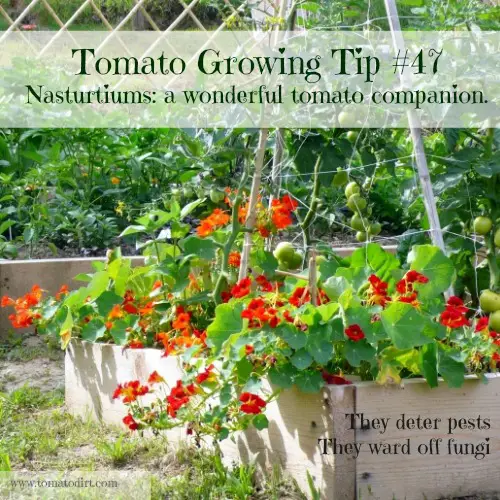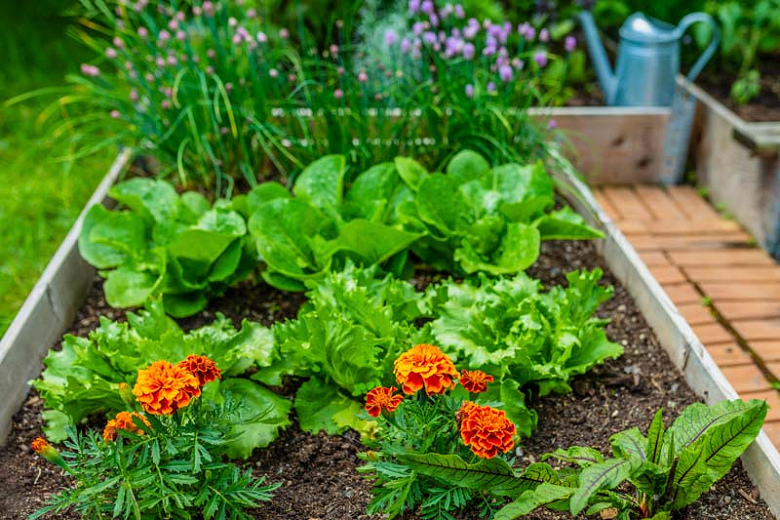Best Companion Plants For Nasturtiums
Title: Best Companion Plants for Nasturtiums
Introduction:
Nasturtiums are a beautiful and versatile flower that can be grown in a variety of conditions. They are also a great choice for companion planting, as they can benefit a number of other plants in the garden.
In this blog post, we will discuss the best companion plants for nasturtiums. We will also provide some tips on how to plant and care for these plants together.
Main Content:
- Benefits of companion planting with nasturtiums:
- Attract pollinators: Nasturtiums are a great attractor of pollinators, such as bees, butterflies, and hummingbirds. These pollinators are essential for the pollination of other plants in the garden, so planting nasturtiums can help to improve the overall productivity of your garden.
- Repel pests: Nasturtiums also have a number of insecticidal properties, which can help to repel pests such as aphids, cabbage worms, and Japanese beetles. This can help to protect your other plants from these pests, and can save you time and money on pesticides.
- Improve soil quality: Nasturtiums are also beneficial for the soil. They help to improve soil aeration and drainage, and they can also help to fix nitrogen in the soil. This can make the soil more fertile and productive for other plants.
- Best companion plants for nasturtiums:
- Brassicas: Nasturtiums are a good companion plant for brassicas, such as broccoli, cabbage, and cauliflower. These plants benefit from the insecticidal properties of nasturtiums, and they can also help to improve soil quality.
- Cucurbits: Nasturtiums are also a good companion plant for cucurbits, such as cucumbers, melons, and squash. These plants benefit from the pest-repelling properties of nasturtiums, and they can also help to improve soil aeration and drainage.
- Legumes: Nasturtiums are also a good companion plant for legumes, such as beans, peas, and lentils. These plants benefit from the nitrogen-fixing properties of nasturtiums, and they can also help to improve soil quality.
- Other flowers: Nasturtiums can also be planted with other flowers, such as marigolds, sunflowers, and zinnias. These flowers benefit from the pest-repelling properties of nasturtiums, and they can also help to create a beautiful and colorful garden.
- Tips for planting and caring for nasturtiums with other plants:
- When planting nasturtiums with other plants, it is important to choose plants that have similar growing requirements. For example, nasturtiums are a warm-season plant, so they should be planted with other warm-season plants.
- It is also important to plant nasturtiums at the right distance from other plants. Nasturtiums can spread quite quickly, so it is important to give them enough space to grow.
- Finally, it is important to water nasturtiums regularly, especially during the hot summer months.
Conclusion:
Nasturtiums are a great choice for companion planting, as they can benefit a number of other plants in the garden. By planting nasturtiums with the right plants, you can improve the overall productivity of your garden, protect your plants from pests, and improve soil quality.
Nasturtiums are beautiful and easy-to-grow flowers that can also benefit your vegetable garden. They attract pollinators, deter pests, and improve soil quality. Some of the best companion plants for nasturtiums include cucumbers, tomatoes, broccoli, and kale.
If you're looking for more information about companion planting with nasturtiums, visit Home Gardening. This website has a comprehensive guide to companion planting, including a list of the best plants to grow with nasturtiums.
FAQ of companion plant nasturtium
Q: What are some good companion plants for nasturtiums?
A: Nasturtiums are a great companion plant for many different types of vegetables. Some of the best companion plants for nasturtiums include:
- Brassicas: Broccoli, Brussels sprouts, cabbage, cauliflower, kale, and kohlrabi all benefit from being planted near nasturtiums. Nasturtiums help to deter pests that can damage brassicas, such as aphids, cabbage worms, and cabbage loopers.
- Cucurbits: Cucumbers, melons, pumpkins, and squash also benefit from being planted near nasturtiums. Nasturtiums help to attract pollinators, such as bees and butterflies, which help to pollinate the cucurbits.
- Legumes: Beans and peas are also good companion plants for nasturtiums. Nasturtiums help to fix nitrogen in the soil, which benefits the legumes.
- Nightshades: Tomatoes, peppers, and eggplants all benefit from being planted near nasturtiums. Nasturtiums help to attract pollinators and deter pests that can damage nightshades, such as aphids and whiteflies.
Q: What plants should I avoid planting near nasturtiums?
A: There are a few plants that you should avoid planting near nasturtiums. These include:
- Mint: Mint is a very aggressive plant that can quickly take over a garden. If you plant mint near nasturtiums, the mint will likely smother the nasturtiums.
- Potatoes: Potatoes and nasturtiums should not be planted together because they can cross-pollinate. This can lead to the potatoes tasting bitter.
- Other ground covers: Nasturtiums are a vigorous grower and can quickly become a ground cover. If you plant nasturtiums near other ground covers, the nasturtiums will likely outcompete the other plants.
Q: How do I plant nasturtiums with other companion plants?
A: When planting nasturtiums with other companion plants, it is important to consider the spacing requirements of each plant. Nasturtiums need about 12 inches of space between plants, so you will need to space them accordingly when planting them with other plants.
It is also important to consider the sunlight requirements of each plant. Nasturtiums need full sun, so you will need to plant them in a sunny location. Other companion plants may have different sunlight requirements, so you will need to choose plants that have similar sunlight requirements.
Q: What are the benefits of companion planting with nasturtiums?
A: There are many benefits to companion planting with nasturtiums. Some of the benefits include:
- Deterrent to pests: Nasturtiums can help to deter pests from other plants in the garden. The bright colors of nasturtiums can attract pests away from other plants, and the strong scent of nasturtiums can also repel pests.
- Attract pollinators: Nasturtiums are a great way to attract pollinators to the garden. The bright colors and sweet nectar of nasturtiums attract bees, butterflies, and other pollinators, which help to pollinate other plants in the garden.
- Improve soil quality: Nasturtiums help to improve soil quality by fixing nitrogen in the soil. This benefits other plants in the garden, as they can then use the nitrogen that the nasturtiums have fixed.
Image of companion plant nasturtium
Nasturtiums are a great companion plant for tomatoes because they help to deter pests. The nasturtiums' strong scent confuses pests, making them less likely to attack the tomatoes.
Nasturtiums are also a good companion plant for roses. They help to attract beneficial insects, such as ladybugs and hoverflies, which help to control rose pests.
Nasturtiums can also be planted with beans. The nasturtiums' nitrogen-fixing roots help to improve the soil for the beans, and the beans provide shade for the nasturtiums, which helps to prevent them from wilting.
Nasturtiums can also be planted with cucumbers. The nasturtiums' strong scent helps to deter cucumber beetles, and the cucumbers provide shade for the nasturtiums, which helps to prevent them from wilting.
Nasturtiums can also be planted with carrots. The nasturtiums' roots help to repel carrot root fly, and the carrots provide shade for the nasturtiums, which helps to prevent them from wilting.
Nasturtiums can also be planted with lettuce. The nasturtiums' roots help to repel aphids, and the lettuce provides shade for the nasturtiums, which helps to prevent them from wilting.
Nasturtiums can also be planted with peas. The nasturtiums' roots help to fix nitrogen in the soil, which benefits the peas, and the peas provide support for the nasturtiums, which can get quite tall.
Nasturtiums can also be planted with herbs. The nasturtiums' strong scent helps to deter pests from the herbs, and the herbs provide shade for the nasturtiums, which helps to prevent them from wilting.
Nasturtiums can also be planted with flowers. The nasturtiums' bright colors and cheerful flowers add a touch of beauty to any garden, and they can also attract pollinators, such as bees and butterflies.





Post a Comment for " Best Companion Plants For Nasturtiums"